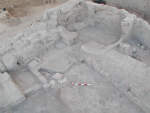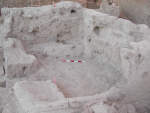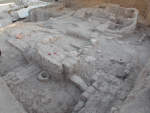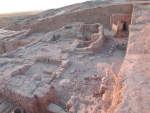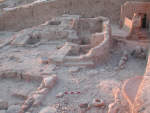| Evolution |
2001-09-05 |
okk |
Once the area was abandoned, natural forces such as rain, wind and animals eroded walls and floors, which is indicated by upper floors and accumulations being cut. Walls were weakened structurally and eventually fell, collapsing and falling downslope. This brickfall settled, the bricks closest to the buildings remained more intact, the layer above was more decomposed by water and settling and the uppermost layer was melted until the point that there are only a few small pieces of brick remaining. Thus the closer to the locus of brickfall, the more likely the bricks will be whole. It also seems plausible that in more confined areas like a room when there is brickfall contained within it, it could create a bowl that allows for the retention of water which then disintegrates brick. This appears to be the case in room a13, where the brickfall is in the second stage of decomposition from the bottom, and there are also water laminations; evidence of water pooling and being retained for a period of time. In addition, on the tops of the walls of a13 there are more whole bricks, suggesting that the primary locus of brickfall was to the north of this room. [Input: L905okk2.j] |
